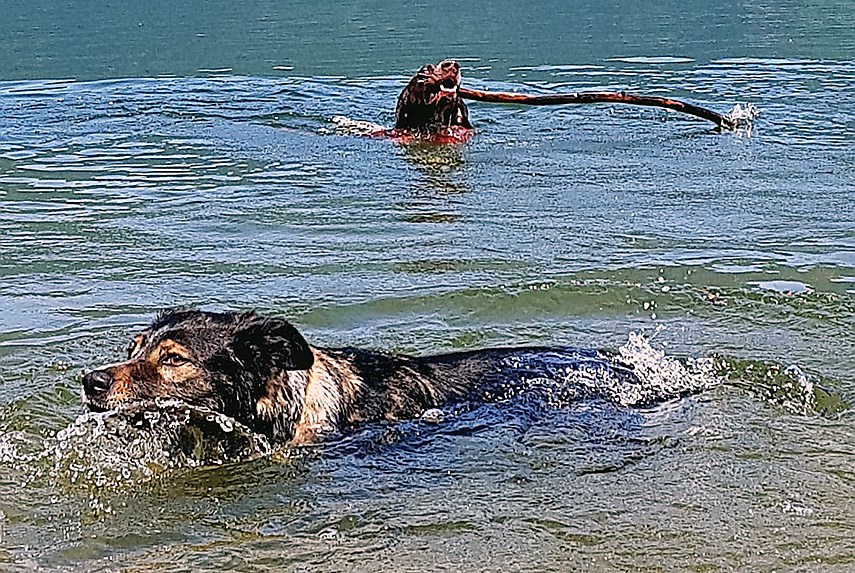With summer temperatures approaching, many of us begin spending time with our doggos, playing and swimming in our local rivers and streams.
What better way to give Fido exercise and help keep him cool than by going for a dip in a lake or creek?
Dogs love water, regardless of the breed or mix of breeds. Your dog doesn’t have to be a traditional water-dog to enjoy dipping its toes and having fun splashing in the surf!
But just because your dog loves the water does not mean they will naturally take to swimming.
It is true some dogs instinctively know how to swim, but it’s rare. Even water-dogs need to learn how to swim and there are some dogs that, due to their conformation, will never be able to swim like the sleek-bodied retrievers.
Brachycephalic or flat-faced breeds with compromised breathing, short legged and wide-bodied dogs swim more for survival, resembling a fish out of water more than a fish in water. Swimming is not fun for these dogs. To allow these dogs to enjoy the water it is best to fit them with a canine lifejacket and monitor them around water.
In fact, a life jacket may be the safest way to introduce Fido to water for the first time as there is no surefire way to gauge a dog’s natural ability to swim.
One place to start your dog’s first swimming lesson is using a kid’s pool. Allowing your dog to play in the shallow water and associating water with fun builds their confidence so when you do go to the shores of a lake you are over the first hurdle, which is the feeling of being wet, on purpose.
Once at the water’s edge, toss a stick or a ball in shallow water. Each time your dog retrieves it, give it praise then toss it progressively farther from shore to teach him to feel comfortable in the water.
Curb the desire to toss a stick or toy as far as you can in the hopes that Fido will risk his life to retrieve it and thus learn to swim. Instead, toss it just far enough that Fido has to get his chest a bit wet and slowly gets used to the feeling of buoyancy. Once he has mastered that step, you can toss the toy a bit farther.
The most terrifying part of your dog’s swimming lesson is when their feet can no longer feel the ground beneath them and they become suspended in the water. They will either panic and return to shore or learn to swim. You can help them by joining your dog in the water and physically assisting them.
If they are doing the dog paddle with their front legs, lift their hips until their back legs join the party. A good fitting harness can be helpful at this point. By supporting the dog in the water while holding the harness the dog can learn how to co-ordinate its legs. Once this happens you can let go of the harness and let the dog take over, sort of like training wheels on a bike.
If your dog is not much a retriever, then get into the water with your dog, and encourage him to come to you using treats and praise. Again start shallow and slowly begin to get into deeper waters.
If your dog does not want to go, don’t force them. Be patient and end each swimming lesson on a positive note.
Do not throw your dog into the water and hope he figures it out. This is the best way to teach your dog to never go near water, or you for that matter, ever again.
Once you have determined that Fido is swimming without assistance there are a few things to remember. First is, dogs tire quickly when swimming. It is just as much of a full body workout for them as it is for us. Cold water can zap their energy and swimming efficiency. Be aware of the water temperature and the length of time they are in it because they can get hypothermia even on a hot day.
Keep your dog close to shore. Don’t allow them to swim too far away as they can become disoriented and unable to return to shore.
Following these safe steps, you can have a dog that enjoys some fun in the water, maybe even become the Michael Phelps of canines.
Joan Klucha has been working with dogs for more than 20 years in obedience, tracking and behavioural rehabilitation. Contact her at [email protected].



